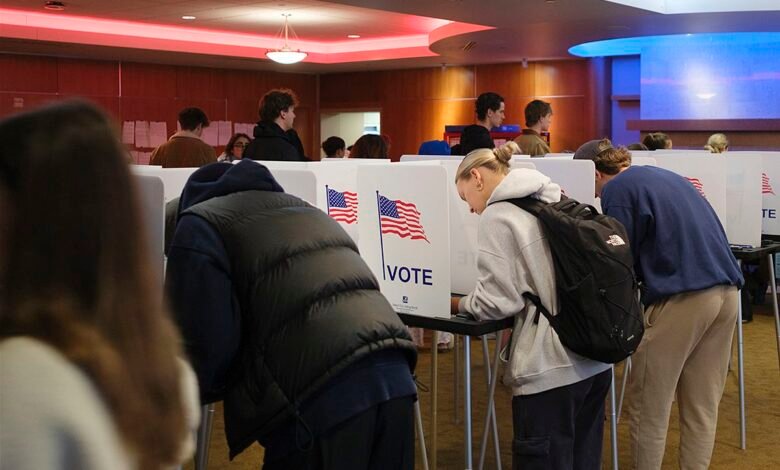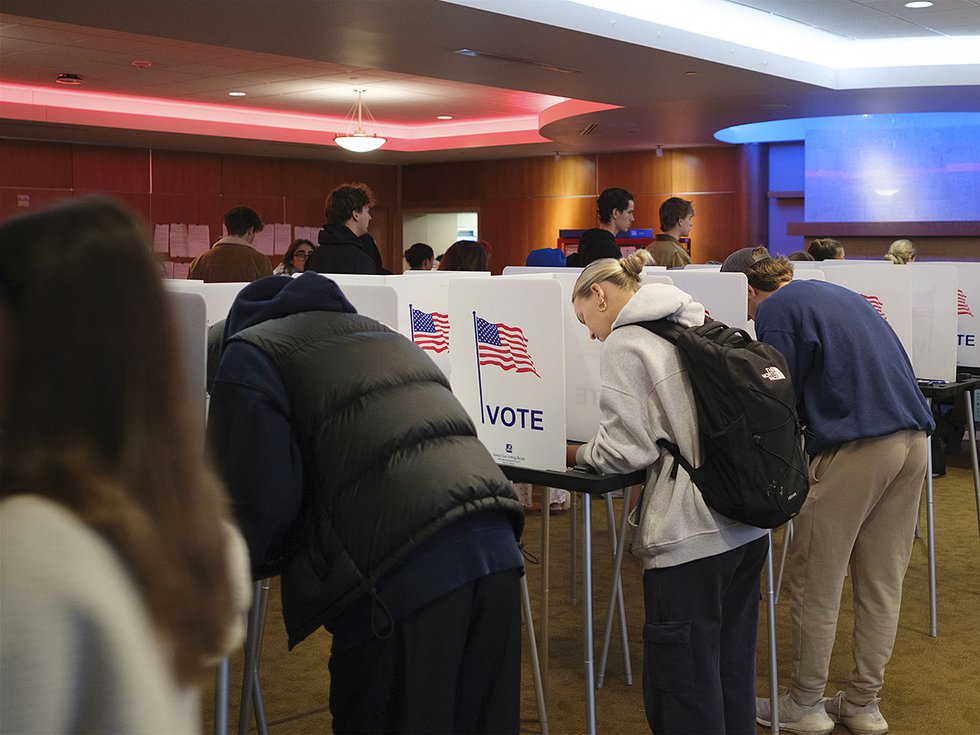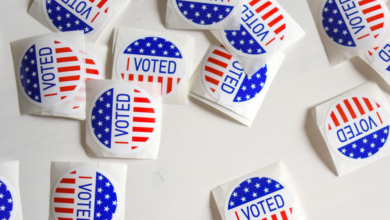‘It’s been remarkably quiet’ – Isthmus


There was no line at the Warner Park Community Recreation Center on Madison’s north side at 8:30 a.m., usually a popular time to vote on Election Day. The scene was similar at the Vera Court Neighborhood Center about 10 minutes later, where it took voter #67 just four minutes to vote.
But there were early morning lines at Blackhawk Church on the far west side, where about 150-200 voters were waiting to vote at 7 a.m. Almost 800 had voted by 9 a.m. At peak the wait was about 30 minutes but the line disappeared by 9:30 a.m., according to an election official there.
Other than one tabulator machine that had to be swapped out after it stopped functioning, poll operations across the city were smooth Tuesday, says Dylan Brogan, the city’s communications manager.
“It’s been remarkably quiet,” Brogan says.
Unlike 43 other states, Wisconsin law prohibits election workers from beginning to process absentee ballots until the polls open at 7 a.m. on Election Day. Early voting turnout was high in Madison this year, so it was expected that poll workers would have their hands full processing absentee ballots. At an early evening press briefing, Madison City Clerk Maribeth Witzel-Behl said that poll workers were working on absentee ballots throughout the day.
As of 5 p.m. Tuesday, around 98,790 absentee ballots had been returned in Madison, according to preliminary numbers from the city clerk’s website. Of those ballots, 40,219 had been processed, Witzel-Behl said.
Though the morning started with a light drizzle, Election Day voters braved downpours later in the afternoon. At the Timberlake Village Apartment polling location in west Madison, chief inspector Meg Hamel, a poll worker for about 10 years, said that operations had been mostly routine throughout the day. About 40 people were in line when the doors opened at 7 a.m.
Hamel said that 314 ballots had been cast by 3 p.m. There are more than 700 names on the location’s voter rolls, she noted, but said that some of those voters might have voted early or could have also moved out of the ward.
Hamel said that since the pandemic, people arrive steadily throughout the day rather than come all at once during rush times: “We often don’t have the same spikes that were reliably the case in the olden days.”
At the Urban League of Greater Madison, on Park Street, Chief Inspector Aysha Goodwin said there was a small rush at lunch time, but that turnout has been steady throughout the day and there have been no notable hiccups. Goodwin said there are 19 volunteers working at the polling station.
Two of those volunteers, Vernon Ziegler and Karen Boegler, were greeting voters at the entrance around 4 pm. Ziegler is working his third election and said he decided to volunteer after poll workers started receiving death threats. Boegler, who also volunteers with the League of Women Voters of Dane County, is working her first election.
“I just think voting is important,” Boegler said.
Izzie Behl, chief inspector at the Memorial Union polling station, reports that the station’s busiest time was from 7-8 a.m.: “We had 52 Election Day registrations in that hour.”
Though that rush subsided later in the day, Behl, who also served as a chief inspector at an east Madison polling station for the 2020 general election, when COVID was in full swing, said that the station has had “a steady stream of people all day.” At around 2:15 p.m., election officials were busy at work processing absentee ballots at a nearby table. She estimates that around 500 people in the ward voted early.
Absentee ballots returned to the clerk’s office are brought to voters’ polling locations to be processed on Election Day. There, they are processed like all other ballots, said Behl. Once election officials have ensured that both a voter and their witness have signed the ballot’s envelope and that the envelope has an address and is free of tampering, it’s checked into the poll book and assigned a voter slip number, Behl said.
“We hand in the voter slip number and then as we open the envelopes, we put the envelopes and the ballots face down to keep every ballot a secret,” she said. “Then we have two election officials go to the tabulator, announce [they’re] processing absentee ballots, and feed them in.”
In comparison to 2020, Behl said that things are less “stressful, rushed and packed.”
“I was in a small park shelter on the east side, and that might [have] contributed to it. We have a big, spacious room here,” Behl said, referring to the 3,587-square-foot Tripp Commons. “But also, people don’t have to stay six feet apart anymore, so lines seem less long and people can get through easier.”


